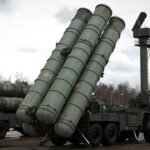Russia’s recent delivery of the S-400 Triumf air defense system to Iran represents a significant geopolitical and military development in the Middle East. The S-400 is one of the most advanced surface-to-air missile systems in the world, capable of engaging a wide range of aerial threats, including aircraft, drones, and ballistic and cruise missiles, at distances of up to 400 kilometers.
Key Features of the S-400 Triumf
- Range and Coverage: The S-400 can detect and track aerial targets over 600 km away and engage them at up to 400 km.
- Multi-Target Capability: The system can track up to 300 targets and engage 36 simultaneously, making it one of the most versatile air defense systems globally.
- Missile Types: It can use multiple types of missiles, including long-range 40N6 missiles, medium-range 48N6, and short-range 9M96 missiles, offering flexibility in engaging different threats.
- Integrated Radar System: The S-400 is equipped with an advanced radar system that can detect stealth aircraft, cruise missiles, and other low-flying threats.
Strategic Impact for Iran
Iran’s acquisition of the S-400 dramatically enhances its air defense capabilities. It can now effectively defend key military and nuclear sites against aerial strikes, which has been a concern given the increasing tensions with regional adversaries like Israel, Saudi Arabia, and the United States. Additionally, the S-400’s range allows Iran to monitor and potentially challenge foreign military activity in neighboring regions, including the Persian Gulf, a strategic area for global oil supplies.
Geopolitical Implications
- Iran’s Military Posture: The S-400 strengthens Iran’s defensive posture and gives it a powerful deterrent against air strikes. This may embolden Tehran to assert its regional influence more aggressively, knowing that it can now protect critical infrastructure from aerial attacks.
- Regional Tensions: The delivery of the S-400 to Iran is likely to raise alarm in Israel and Saudi Arabia, both of which view Iran as a significant security threat. Israel, in particular, has expressed concerns over Iran’s missile and nuclear programs, and the introduction of the S-400 could complicate any potential Israeli military actions against Iranian targets.
- Russia’s Influence in the Region: Russia’s decision to supply the S-400 to Iran cements its role as a key player in Middle Eastern geopolitics. Moscow has built strong ties with Tehran through military cooperation in Syria and now arms sales, positioning itself as a counterweight to U.S. influence in the region.
Challenges and Concerns
- Operational Integration: While the S-400 is highly advanced, integrating it into Iran’s existing military infrastructure may pose challenges. Iran will need to train personnel and develop command-and-control systems that can fully utilize the system’s capabilities.
- Sanctions and Diplomatic Fallout: The deal between Russia and Iran may further complicate relations with the West. The U.S. has previously imposed sanctions under the Countering America’s Adversaries Through Sanctions Act (CAATSA) on countries that purchase the S-400, which has affected Russia’s military exports. Iran may face additional sanctions as a result, though it is already heavily sanctioned for its nuclear and missile programs.
Russia’s delivery of the S-400 Triumf air defense system to Iran marks a pivotal moment in the region’s security dynamics. The system significantly enhances Iran’s defense capabilities, potentially altering the military balance in the Middle East. As a result, regional tensions may escalate, and the geopolitical landscape will likely become more complex with Russia’s deeper involvement in Middle Eastern affairs.





